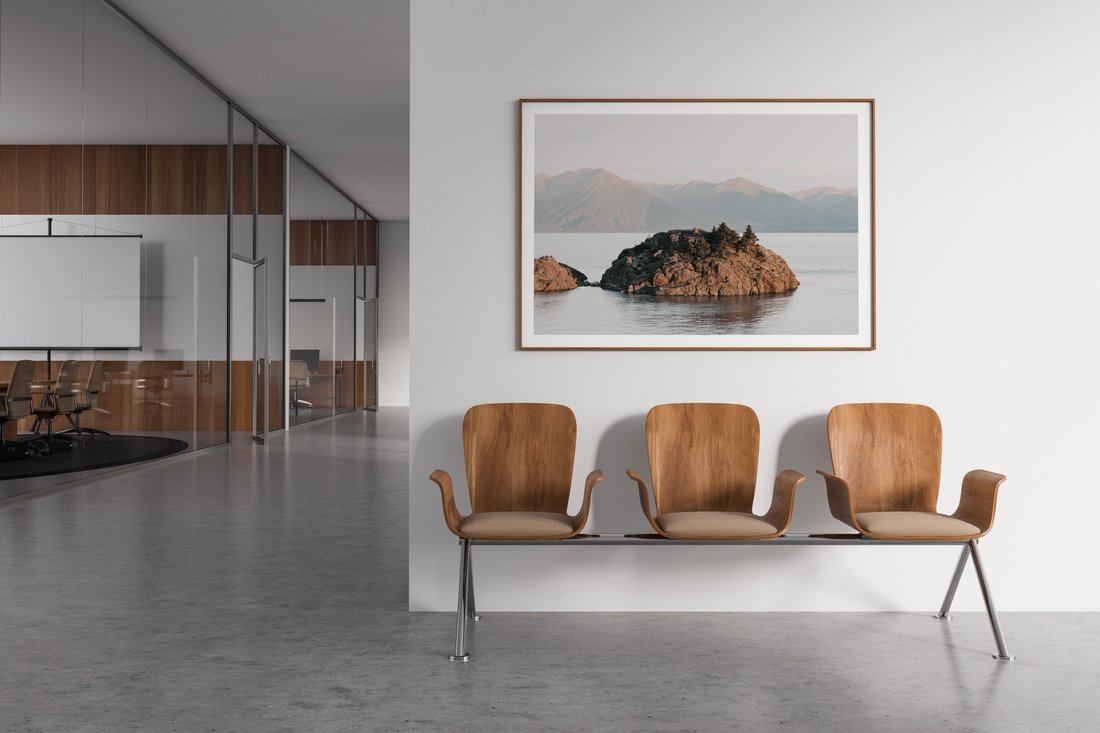Art has the power to transform spaces, evoke emotions, and create a welcoming environment. In public access buildings like government offices, DMVs, police stations, municipal offices, and hospitals, it's crucial to ensure that art is accessible and enjoyable for everyone. This blog post will explore how to select and position art to maximize accessibility and why it's essential for public spaces to address accessibility issues.
The Importance of Accessible Art in Public Spaces
Public spaces serve diverse communities, including people with disabilities, elderly individuals, and those with varying levels of vision and mobility. Making art accessible ensures that everyone can enjoy and benefit from the aesthetic and emotional value it brings. Accessible art in public spaces promotes inclusivity, enhances the visitor experience, and provides community access to the arts.
Key Accessibility Issues to Consider
Visual Impairments
People with visual impairments, including low vision and color blindness, may struggle to fully appreciate art that isn't designed with their needs in mind. Consider the following:
- Contrast and Color: Choose art with high contrast and distinct colors to make it easier to see. Avoid relying solely on color distinctions that may be difficult for color-blind individuals to differentiate. For example blue and purple in the same piece can be hard to see.
- Tactile Elements: Incorporate tactile art or descriptive plaques that allow visually impaired individuals to experience the art through touch or detailed descriptions.
Physical Accessibility
For individuals with mobility issues or those using wheelchairs, it's essential to position art in a way that is easily viewable without physical strain:
- Height and Placement: Hang art at a height that is accessible to both standing and seated viewers. Typically, the center of the artwork should be about 57 inches from the floor.
- Clear Pathways: Ensure there are clear, wide pathways around the art so that people with mobility aids can navigate easily without obstruction.
Cognitive and Sensory Accessibility
Consideration for those with cognitive disabilities or sensory sensitivities is also vital:
- Simplified Descriptions: Use simple, clear language for any descriptive plaques or signage accompanying the artwork.
- Minimal Overstimulation: Avoid overly busy or chaotic art pieces that might overwhelm individuals with sensory processing issues.
Tips for Selecting and Positioning Art
Inclusive Art Selection
- Diverse Subjects: Choose artwork that represents diverse cultures, abilities, and experiences. This inclusivity helps all visitors feel represented and valued.
- Interactive Pieces: Consider interactive art that engages multiple senses and invites participation, enhancing the experience for everyone.
Thoughtful Positioning
- Consistent Height: Maintain a consistent hanging height for all artwork to create a cohesive and accessible viewing experience.
- Accessible Descriptions: Provide both written and audio descriptions of the art. QR codes can link to audio guides or videos that offer more in-depth explanations.
- Adequate Lighting: Ensure proper lighting to highlight the art without causing glare or shadows that might impede viewing.
Art is for Everyone!
Creating accessible art in public spaces is a vital aspect of serving the community. By considering the needs of all visitors, including those with disabilities, public access buildings can ensure that everyone can enjoy and benefit from the art on display. Thoughtful selection, inclusive design, and strategic positioning of artwork can make a significant difference in creating a welcoming and enriching environment for all.




